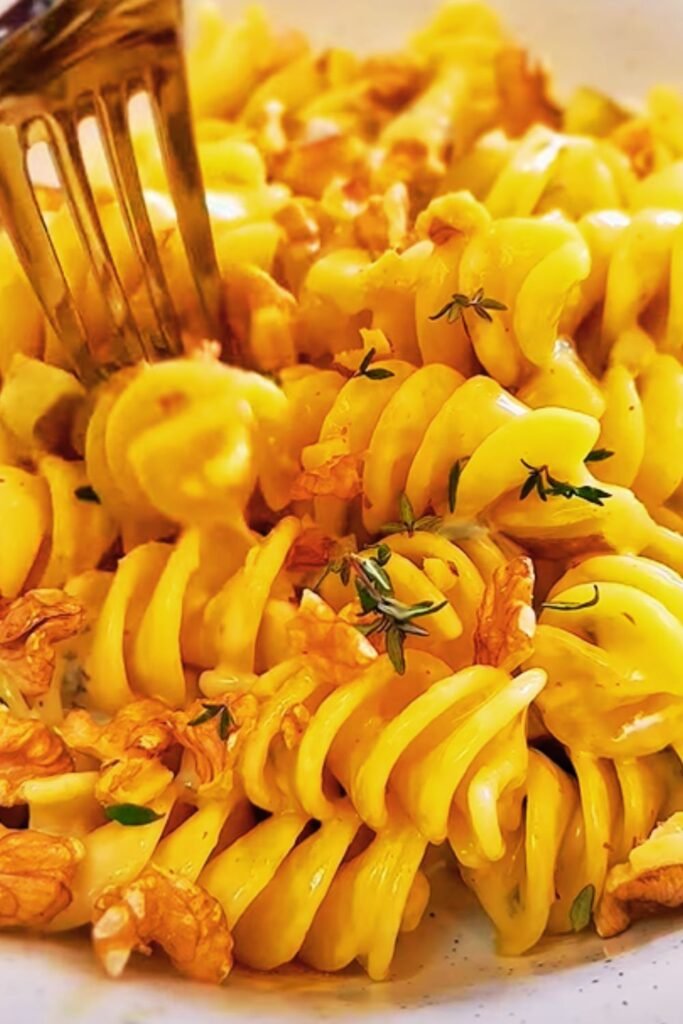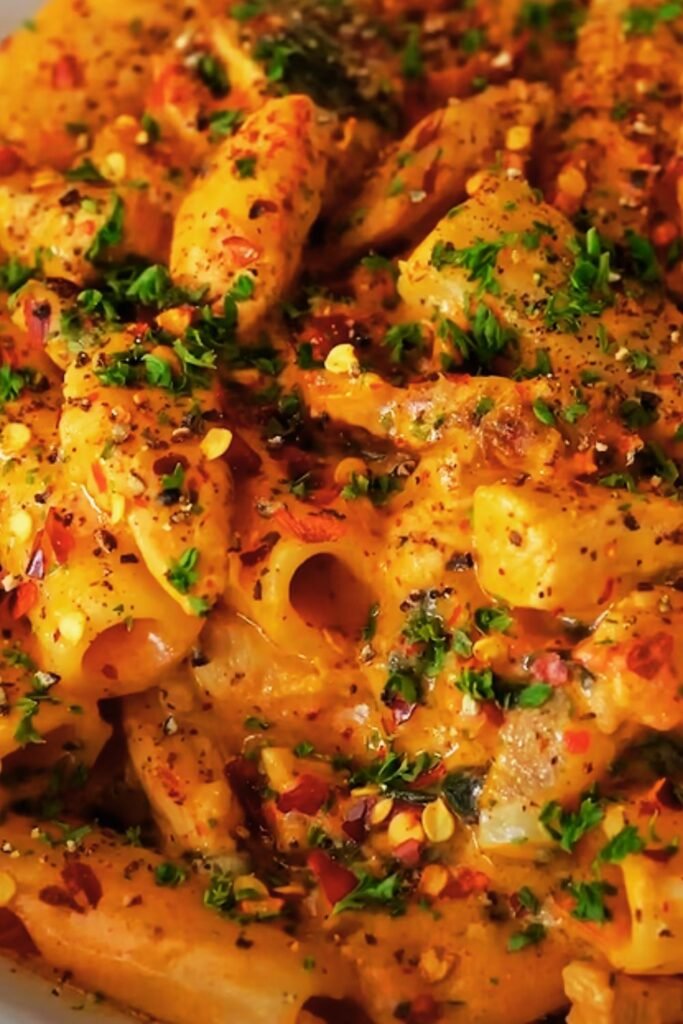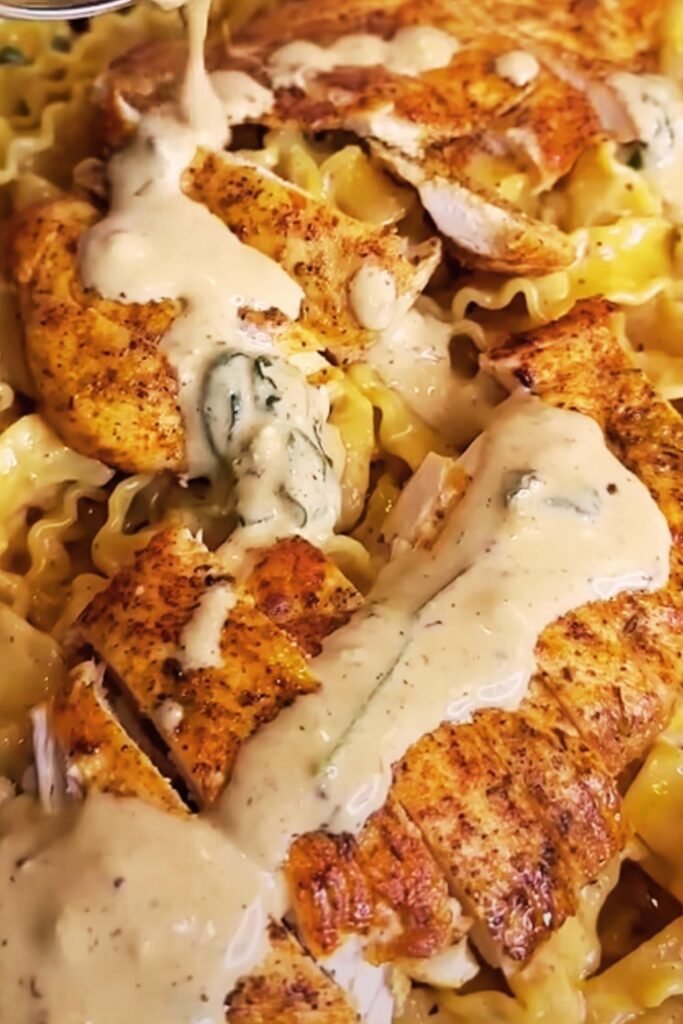Have you ever craved a pasta dish that’s both comforting and elegant? Something that feels indulgent but doesn’t require hours in the kitchen? Look no further than this creamy spinach goat cheese pasta. It’s become my absolute go-to for those evenings when I want something special without the fuss.
I discovered this recipe years ago when I was trying to use up some goat cheese and spinach in my refrigerator before they spoiled. What started as a kitchen experiment has evolved into one of my most requested dishes when friends come over for dinner. The tangy creaminess of the goat cheese paired with the vibrant spinach creates a sauce that coats each strand of pasta perfectly.
What makes this dish truly exceptional is its versatility. You can dress it up with additional ingredients or keep it simple. It works as a quick weeknight meal or as part of an elegant dinner party spread. I’ve made countless variations of this recipe over the years, but the version I’m sharing today has been refined to perfection.
Ingredients
For this soul-satisfying pasta dish, you’ll need:
- 12 oz (340g) pasta of your choice (I prefer linguine or fettuccine)
- 3 tablespoons extra virgin olive oil
- 4 cloves garlic, minced
- 1 small shallot, finely diced
- 1 pound (450g) fresh spinach, washed and roughly chopped
- 8 oz (225g) goat cheese (chèvre)
- 1/2 cup pasta cooking water (reserved)
- 1/4 cup heavy cream
- 1/2 teaspoon red pepper flakes (adjust to taste)
- Zest of one lemon
- 2 tablespoons fresh lemon juice
- 1/2 cup toasted pine nuts
- Salt and freshly ground black pepper to taste
- 1/4 cup fresh basil leaves, torn or chopped
- 2 tablespoons fresh chives, finely chopped
- Freshly grated Parmesan cheese for serving (optional)
Kitchen Equipment You’ll Need
- Large pot for cooking pasta
- Colander
- Large skillet or sauté pan
- Wooden spoon or silicone spatula
- Sharp knife and cutting board
- Microplane or zester for the lemon
- Measuring cups and spoons
- Small skillet for toasting pine nuts
The Perfect Pasta: Choosing Your Base
The pasta you choose serves as the foundation of this dish. While I’ve mentioned my preference for linguine or fettuccine, there are several excellent options:
| Pasta Type | Texture | Best For | Cooking Time |
|---|---|---|---|
| Linguine | Flat and thin | Lighter sauces that coat evenly | 9-11 minutes |
| Fettuccine | Flat and thick | Creamy sauces | 10-12 minutes |
| Pappardelle | Wide ribbons | Rich, creamy sauces | 8-10 minutes |
| Farfalle (bow ties) | Varied texture | Catching small ingredients | 10-12 minutes |
| Fusilli | Spiral shape | Trapping sauce in grooves | 10-12 minutes |
| Orecchiette | Small ear-shaped | Holding bits of spinach | 9-11 minutes |
I recommend using a high-quality pasta for this dish. If you’re feeling ambitious, homemade pasta takes this recipe to another level entirely. However, a good-quality dried pasta works beautifully too.
Step-by-Step Instructions
Preparing Your Ingredients
- Fill a large pot with water, add a generous pinch of salt (it should taste like seawater), and bring to a boil.
- While waiting for the water to boil, prepare your ingredients: mince the garlic, dice the shallot, chop the spinach, and measure out the remaining ingredients.
- Toast the pine nuts in a small dry skillet over medium heat, shaking occasionally, until golden brown (about 3-5 minutes). Watch them carefully as they can burn quickly! Set aside.
Cooking the Pasta
- Add the pasta to the boiling water and cook according to package instructions until al dente. Remember to reserve 1/2 cup of pasta water before draining!
- Drain the pasta but don’t rinse it—the starch on the surface will help the sauce adhere better.
Creating the Creamy Spinach Goat Cheese Sauce

- While the pasta is cooking, heat the olive oil in a large skillet over medium heat.
- Add the minced garlic and diced shallot, sautéing until fragrant and translucent (about 2-3 minutes). Be careful not to brown the garlic as it can become bitter.
- Add the red pepper flakes and stir for 30 seconds to infuse the oil.
- Add the chopped spinach in batches, stirring until wilted. This may seem like a lot of spinach, but it will cook down dramatically.
- Once all the spinach has wilted, reduce the heat to low and add the goat cheese, stirring until it melts and creates a creamy sauce.
- Pour in the heavy cream and a few tablespoons of the reserved pasta water, stirring until the sauce reaches your desired consistency. Add more pasta water if needed—the starch in it helps create a silky texture.
- Add the lemon zest and juice, stirring to combine. The acidity of the lemon brightens the rich flavors of the dish.
- Season with salt and freshly ground black pepper to taste.
Bringing It All Together
- Add the drained pasta directly to the skillet with the sauce, tossing gently to coat each strand. If the sauce seems too thick, add a splash more pasta water.
- Add half of the toasted pine nuts and most of the fresh herbs, saving some for garnish.
- Toss everything together and cook for another minute to allow the flavors to meld.
Plating and Serving

Transfer the pasta to warmed plates or a large serving platter. Top with the remaining pine nuts, fresh herbs, and freshly ground black pepper. If desired, offer grated Parmesan cheese at the table for those who want an extra layer of flavor.
For a beautiful presentation, I like to use tongs to twirl the pasta into a neat mound, then arrange the garnishes artfully on top. A drizzle of high-quality extra virgin olive oil as a finishing touch elevates the dish even further.
Variations to Try
One of the reasons I love this recipe is its adaptability. Here are some of my favorite variations:
Protein Additions
- Add grilled chicken breast, cut into strips
- Fold in roasted shrimp during the final minute of cooking
- Mix in cubes of prosciutto or pancetta (crisp them in the pan before adding the garlic and shallot)
Vegetable Enhancements
- Add roasted cherry tomatoes
- Mix in sautéed mushrooms
- Include blanched asparagus tips in spring
- Stir in roasted red peppers for a sweet contrast
Alternative Cheese Options
While goat cheese creates the signature tangy creaminess of this dish, you can experiment with other soft cheeses:
| Cheese | Flavor Profile | Texture | Works Best With |
|---|---|---|---|
| Goat Cheese (original) | Tangy, creamy | Smooth when melted | Lemon and herbs |
| Boursin | Garlicky, herbed | Very creamy | Additional vegetables |
| Mascarpone | Subtly sweet | Ultra-creamy | Stronger herb presence |
| Ricotta | Mild, slightly sweet | Grainy but smooth | Nutmeg and black pepper |
| Brie (rind removed) | Buttery, mild | Stringy when melted | Mushroom addition |
| Blue cheese | Bold, pungent | Creamy with texture | Walnuts instead of pine nuts |
Make-Ahead and Storage Tips
I often get asked if this dish can be prepared in advance or if leftovers store well. Here’s my guidance:
Make-Ahead Components:
- The pine nuts can be toasted up to a week in advance and stored in an airtight container.
- Garlic and shallots can be minced the day before and stored in the refrigerator.
- Spinach can be washed and chopped the day before, stored between paper towels in a sealed container.
Storing Leftovers:
This pasta is best enjoyed fresh, but leftovers can be stored in an airtight container in the refrigerator for up to 2 days. The sauce may thicken considerably when cold.
Reheating Tips:
To reheat, add a splash of milk or cream and warm gently over low heat, stirring frequently. You can also add a drizzle of olive oil to help revive the sauce. Microwave reheating works in a pinch, but use 50% power and stir halfway through.
Serving Suggestions

This creamy pasta pairs beautifully with several accompaniments:
- A simple arugula salad with lemon vinaigrette provides a peppery contrast
- Garlic bread or crusty artisan bread for soaking up every bit of the sauce
- Roasted vegetables like carrots, bell peppers, or zucchini
- A bright citrus salad with segments of orange and grapefruit
- Sparkling water with lemon or lime wedges
- Iced tea with fresh mint leaves
For a complete meal that balances the richness of the pasta, I typically serve it with a simple green salad dressed with nothing more than good olive oil, lemon juice, salt, and pepper.
Nutritional Benefits
This pasta dish isn’t just delicious—it offers several nutritional benefits:
- Spinach provides iron, vitamins A and C, and antioxidants
- Goat cheese offers protein and calcium with less lactose than cow’s milk cheese
- Pine nuts contribute healthy fats, protein, and vitamin E
- Garlic has immune-boosting properties
- Olive oil provides heart-healthy monounsaturated fats
If you’re looking to make this dish lighter, you can:
- Use half the amount of goat cheese
- Substitute half-and-half or milk for the heavy cream
- Increase the ratio of spinach to pasta
- Use whole grain pasta for additional fiber
Common Mistakes to Avoid
In my years of making this dish, I’ve learned a few lessons the hard way. Here are some pitfalls to avoid:
- Overcooking the pasta: Keep it al dente as it will continue to cook slightly when tossed with the hot sauce.
- Burning the garlic: Use medium-low heat and watch carefully to prevent bitterness.
- Not reserving pasta water: This starchy liquid is crucial for creating a silky sauce.
- Using cold goat cheese: Let it come to room temperature before adding to ensure smooth melting.
- Skipping the lemon: The acidity balances the richness of the dish.
- Oversalting: Remember that the pasta water is already salted, and goat cheese has natural saltiness.
Why This Recipe Works
What makes this recipe special is the balance of flavors and textures. The creamy goat cheese sauce is brightened by lemon, the wilted spinach adds earthiness, and the toasted pine nuts provide textural contrast. The dish manages to be simultaneously sophisticated and comforting.
The ingredients work in harmony:
- The starch from the pasta helps thicken the sauce
- Goat cheese melts into a creamy consistency without requiring a traditional roux
- Spinach wilts quickly but maintains some structure
- Lemon cuts through the richness
- Red pepper flakes add a subtle heat that builds with each bite
I’ve served this pasta to goat cheese skeptics who have become converts after tasting this dish. The cooking method transforms the cheese into a luscious sauce that coats each bite perfectly.
Questions and Answers
Q: Can I use frozen spinach instead of fresh? Yes, you can use frozen spinach in a pinch. Thaw it completely and squeeze out as much moisture as possible before adding it to the pan. You’ll need about 10-12 ounces of frozen spinach to equal 1 pound of fresh. However, fresh spinach provides a better texture and more vibrant flavor for this dish.
Q: Is there a dairy-free alternative I can use instead of goat cheese? For a dairy-free version, you could try a cashew-based cream sauce. Soak 1 cup of raw cashews overnight, then blend with 1/2 cup water, 2 tablespoons nutritional yeast, 1 tablespoon lemon juice, and salt to taste until completely smooth. Use this in place of the goat cheese and heavy cream. The flavor profile will be different but still delicious.
Q: How can I make this dish more substantial for a main course? To make this more filling, add a protein like grilled chicken, roasted shrimp, or white beans. You could also increase the amount of pine nuts or add other nuts like walnuts or almonds for extra protein and healthy fats.
Q: My sauce turned out grainy instead of smooth. What went wrong? This usually happens when the heat is too high when adding the goat cheese. Lower the heat before adding the cheese and make sure to stir constantly as it melts. If your sauce does break or become grainy, you can sometimes rescue it by removing from heat and whisking in a splash of heavy cream.
Q: Can I make this with a different green vegetable? Absolutely! Kale works well (though it needs a bit more cooking time), as does Swiss chard or even baby arugula for a peppery flavor. Broccoli florets (blanched first) or fresh peas would also be delicious alternatives or additions.
Q: How can I prevent the pine nuts from burning? Pine nuts have a high oil content and can go from perfectly toasted to burnt very quickly. Toast them in a dry pan over medium-low heat, shaking the pan frequently. Stay with them the entire time, and remove from heat immediately when they’re light golden brown. They’ll continue to darken slightly after removing from heat.
Q: Can this dish be frozen? I don’t recommend freezing this pasta dish, as cream-based sauces tend to separate when thawed and reheated. The texture of the pasta will also suffer. This is one dish that’s really best enjoyed fresh or within a day or two of preparation.
Q: What’s the best type of goat cheese to use? I prefer a soft, fresh goat cheese (chèvre) for this recipe. Avoid aged goat cheeses, which won’t melt as smoothly. If you find goat cheese too tangy, you can use a milder variety or blend it with a little cream cheese to mellow the flavor.
Final Thoughts
This spinach goat cheese pasta has become a cornerstone in my cooking repertoire because it strikes the perfect balance between simplicity and sophistication. I can whip it up on busy weeknights when I need something satisfying, or serve it to guests who always ask for the recipe.
What I love most about it is how the creamy, tangy sauce clings to each strand of pasta, delivering a perfect bite every time. The contrasting textures—tender pasta, silky spinach, creamy sauce, and crunchy pine nuts—create a multi-dimensional dish that’s far greater than the sum of its parts.
If you’re new to cooking with goat cheese, this recipe offers an accessible introduction to its unique flavor profile. And if you’re already a fan, you’ll appreciate how it shines in this application.
I encourage you to make this recipe your own. Maybe you’ll add sun-dried tomatoes for a touch of sweetness, or stir in some caramelized onions for depth. Perhaps you’ll experiment with different herbs or add a splash of white wine to the sauce. However you customize it, I hope this spinach goat cheese pasta brings as much joy to your table as it has to mine over the years.